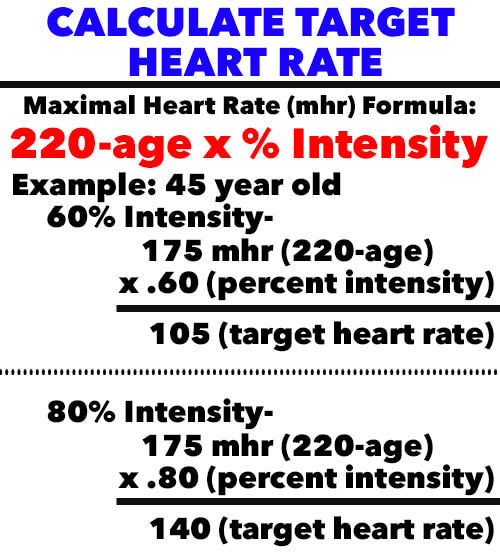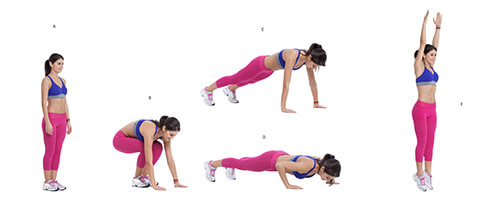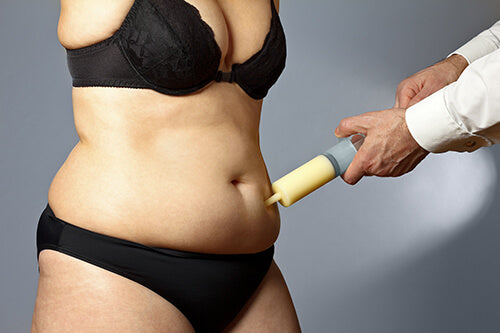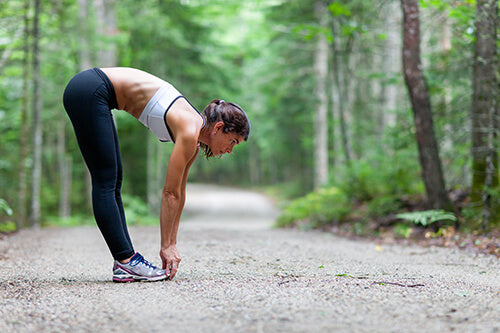Fitness Myths Busted
It seems that no matter where you look or who you ask you are going to be met with a few fitness myths that just aren’t true. Usually it’s because people are honestly trying to be helpful but just don’t know that the information they are giving you is wrong, and sometimes you’re actually asking someone who’s trying to sabotage your fitness success. Either way these fitness myths have the potential to confuse and derail even the most cautious listener. But we’re here to help!
We’ve compiled a list of fitness myths that are most commonly confused as fitness truths to help you out along your journey. So remember that the next time you hear someone utter these words, take them with a grain of salt, because they just aren’t true.
Destroy These Fitness Myths
“You need to workout everyday to see results”
Not only is this a fitness myth, but it’s one of those dangerous ones that could completely derail your progress. When you workout you are tearing apart and breaking down the fibers in your muscles. It is actually during recovery that these fibers have a chance to repair themselves into a stronger form. If you do not give your body enough proper recovery time the muscles will not be able to repair themselves and you will find yourself weaker rather than stronger.
Rotating your routine so that you are working arms one day then legs the next followed by your back muscles the following day is a good way to make sure each muscle group has a chance to recover. You should still aim for at least one or two days of active recovery per week though, whether that’s a gentle series of stretches or a walk around town to allow all of your muscles a chance to rest.
“You need to give 100% intensity to every single workout”

This is one of those fitness myths that is spoken as fitness truth with the best of intentions but gets a little murky during the delivery. While you should be focusing 100% of your time, attention and energy on each workout as it’s happening you don’t need to give 100% intensity to each workout. While high intensity interval training or HIIT exercises should certainly have a place in your routine, they don’t need to happen everyday.
Again, this doesn’t mean that you should slack off on your lower intensity days and not give the same amount of attention to light yoga or cardio that you would to tabata or zumba. It just means that you can turn down the intensity levels during the lower intensity workouts and still receive a great overall workout for the day.
“Cardio is the best way to lose weight”
As you may already know, nutrition accounts for eighty percent of your total health and fitness while exercise makes up a mere twenty percent, which means that the BEST way to lose weight is to eat more a more nutritionally rich and balanced diet. Exercise is of course still important though and cardio does help create a calorie deficit each day that helps weight loss. There are better options than endless cardio though. HIIT and weight training are both more effective weight loss tools.
High intensity interval training will work at strengthening and increasing your lean muscle mass while also improving your cardiovascular health. Weight training focuses mostly on increasing muscle mass. The higher percentage your lean muscle mass is compared to your fat, the more calories you will burn at rest, without having to work out at all. Therefore one of the best ways to lose weight from fat is to gain weight from muscles. You’ll tone up, slim down and feel better even if the number on the scale never changes.
“Your workout is useless without at least 20 minutes of cardio”
Cardio is a great way to increase your cardiovascular health, but there are better ways to incorporate cardio into your workout than running on a treadmill for twenty minutes. In fact spending only twenty minutes on the treadmill probably won’t do much for you when it comes to increasing your muscle mass or decreasing your fat percentage. Adding twenty minutes of high intensity interval training to your workout on the other hand will improve your cardiovascular health while also improving muscle tone.
By adding in a high intensity interval training workout like tabata you can also take advantage of the afterburn effect. And who doesn’t love a workout that increases the likelihood of burning calories even after the actual workout is over? And if burning calories post-workout isn’t enough incentive for you then perhaps it might help to know that the harder you work during a HIIT workout, the shorter period of time you actually have to spend on it.
“If you aren’t sore then you didn’t work hard enough”
A number of factors go into to determining whether or not you will be sore after a workout, and how hard you pushed yourself is only one of them. For instance you may have had an incredibly tough workout yesterday that your muscles have not yet recovered from so after you put in even minimal effort today they may feel sore, even though you didn’t do much today. On the other hand perhaps you put in one hell of a workout today but remained hydrated throughout and refueled properly afterwards so your muscles have the nutrients they need to repair themselves and are not sore now.
You cannot assume that just because your muscles are sore or achy one workout is somehow more effective than another. At least not without considering the other factors that may have played a role in creating or enhancing the soreness. The proof of a good workout is a complicated combination of many things none of which include muscle soreness.
“If you’re really sweaty then you got a good workout”
Sweat happens when your core temperature increases and your body needs a way to cool itself off. The sweat itself is not actually what cools you down, but rather the evaporation of the sweat. While your core temperature will increase as your muscles work harder and warm up, other factors may go into cooling you off so that your body does not need to sweat as much. For instance if you are swimming laps in a cool pool you could be getting an incredible workout without a single drop of sweat hitting your skin.
On the other hand you could be sitting on a bench in the scorching sun barely moving with sweat dripping down your face. Climate and workout conditions play a large role in how much you sweat during a workout so it is unfair to your body to assume that just because you don’t have pools of sweat forming around you, the intensity and effectiveness of your workout wasn’t perfectly acceptable.
“Strength training will make you bulk up”
If your goal is to bulk up then strength training is definitely the way to get there, but you’re going to have to use heavy weights, high reps, multiple sets and daily commitment to get there because strength training on an average level is only going to tone your lean muscles, not bulk you up. This is especially true if you are a woman since due to hormonal differences it is more difficult for women to bulk than it is for men.
Many women make the mistake of cutting calories and pushing themselves for hours on cardio to lose unwanted fat but a more efficient way to go about losing fat is to incorporate strength training and keep a balanced diet. Keeping track of macronutrients is more important than keeping track of calories and focusing on building lean muscles is more effective than focusing on burning off fat.
“To strength train you have to use machines and heavy weights”
You don’t need a gym full of heavy equipment and free weights to get a great strength training workout in. All you need is a bit of muscle resistance which you can get from resistance bands, at home free weights and even your very own body weight. While some people are more likely to go to the gym and workout if they are paying a membership fee, all it takes is a little personal commitment to ensure that home workouts work just as well as gym workout.
It may seem intimidating to try to get a great workout at home without the machines and personal trainers around to keep you invested but think of all the time you could save by not having to travel to your gym to get in a little weight training. Whether you prefer to create your own routine or follow a workout DVD, home workouts are becoming a more popular option for strength training.
“Low intensity workouts like Yoga aren’t ‘real’ workouts”
When you think of someone performing cardio you probably imagine someone running at full speed ahead around a track or on a treadmill. When you think of strength training perhaps you see someone pumping out sets on a weight bench or soaring through chin ups. And when you think of yoga it’s likely that the serene image of a quiet room full of people sitting cross legged on the floor, in the lotus position, floats through your head. If that’s the case you may agree that yoga isn’t a “real” workout.
You would be wrong. Because all of those images are wrong. Cardio could be a stroll through the park and strength training may involve five pound free weights while a yoga class like Bikram or power Vinyasa yoga may leave you contorted in positions you never knew possible, with your target heart rate that you haven’t seen in years. The intensity of the workout is far more important to the effectiveness of it, than the type of workout ever is.
“If you want abs you have to do crunches”
Crunches may workout your ab muscles but unless you lose body fat through a balanced and nutrient rich diet paired with strength training workouts, laying on the floor and pushing yourself through endless crunches is not going to do anything for you, except potentially injure your back. In order to increase the strength in your abs you must increase the strength of your entire core, including your back muscles otherwise you run the risk of serious injury.
There are more effective ways to strengthen your abdominal muscles than by laying on the ground doing crunches. In fact working out your stomach muscles while standing is thought to be more effective since that is the position they are most often in when being used. Aside from standing workouts, the plank is also a great full body workout that helps to strengthen and develop your core muscles.
“You can lose weight from certain areas of your body without losing weight in others”
No matter how many well researched scientific articles are published about how wrong this statement is, people go on believing it. The phrase if it sounds too good to be true, it probably is comes to mind in this case. So you have a little extra weight around your stomach, hips or thighs and you want to target it, obliterate it and be done with it so you research workouts that target those areas and get to work. Unfortunately this way of working out isn’t going to get you the results you want.
You may be strengthening these areas of your body and you may even lose some body fat, but you aren’t able to focus weight loss to this single area. That’s why so many people give up on their goals. They try to target and don’t see the weight drop fast enough so they get frustrated and quit. But if you work your entire body the fat will burn faster everywhere leaving all areas (including your target area) slimmer and more toned.
“You must stretch before any workout”
Okay so this fitness myth is more of a semi fitness truth because you should stretch before workouts to make sure that you don’t pull or injure any muscles but there is definitely a right and a wrong way to stretch. And the wrong way is the traditional static stretching that comes to mind when most people think of a pre workout stretching session. Standing or sitting in one spot and holding stretching positions is a thing of the past, and not how you should start your workouts.
Instead you should try out dynamic stretches. These are stretches that keep your body moving throughout the stretch so that your muscles have a better chance of warming up so that you don’t hurt yourself during the actual workout. This also helps to prepare your body for the workout that is about to come while increasing your overall range of motion so that your workout is more effective.
Ignoring The Fitness Myths
Now that you know all about the dangers of listening to these twelve fitness myths, it may be easier for you to ignore them the next time you hear someone utter them when you’re out and about. And if you’re feeling especially helpful you may even want to stop them before they can spread the lies further and correct their false statements. The more people you can share the truth with, the less others will believe in these fitness myths and the better off the health and fitness community will be.















